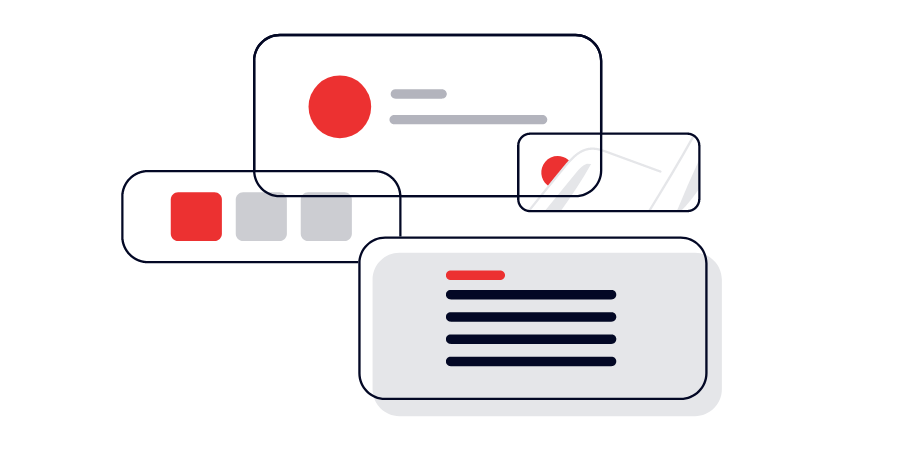Over the past 18 months, the rapid advancement of Artificial Intelligence (AI) has taken the world by storm, transforming industries and reshaping the way businesses operate. From healthcare and finance to manufacturing and transportation, AI has demonstrated its potential to reshape processes, enhance decision-making, and unlock new opportunities for growth and innovation.
As AI continues to evolve and permeate every aspect of our lives, it’s clear that professionals across various disciplines must understand and leverage this powerful technology. Product Managers and Product Leaders, in particular, are at the forefront of this AI revolution, as they play a pivotal role in shaping the products and services that incorporate these newer AI technologies.
Those product people who can effectively harness the power of AI in the processes they use to manage products stand to gain a significant advantage. By leveraging AI-driven insights, automating routine tasks, and enhancing the user experience, Product Managers can make data-driven decisions, accelerate time-to-market, and deliver innovative solutions that meet and exceed customer expectations. (Product Managers will also find that their day-to-day work can be significantly streamlined.)
But there’s a lot to navigate. Product Managers must figure out the ethical considerations, ensure responsible AI deployment, and maintain a delicate balance between leveraging AI’s capabilities and preserving the human touch that is essential to building successful products.
Given all of that, I thought it would be worthwhile to dive into the world of AI as it relates to product people – Product Managers, Product Leaders, and those building tech products. Over the past year, we’ve hosted several product leaders for conversations on these topics. In this essay, I’ll distill some of those conversations to explore the fundamentals of AI for Product Managers, discuss how AI can be leveraged across the product management lifecycle, and showcase best practices for implementing AI in product development. We will also showcase real-world examples and use cases and provide insights into the future outlook of AI in product management.
So, let’s dive in…
AI Fundamentals for Product Managers

First, what do we mean when we refer to AI? Artificial Intelligence (AI) is the simulation of human intelligence processes by machines – particularly computer systems. AI systems are designed to perceive their environment, learn from data, reason, make decisions, and take actions to achieve specific goals. AI has already become increasingly relevant and valuable for several reasons:
- Data-driven decision-making: AI algorithms can process and analyze vast amounts of data, including customer behavior, market trends, and product usage patterns, providing actionable insights to inform product strategy, feature prioritization, and roadmap planning.
- Personalization and recommendation engines: AI-powered recommendation systems can analyze user preferences and behavior to deliver personalized experiences, tailored product recommendations, and targeted marketing campaigns, enhancing customer engagement and satisfaction.
- Automation and optimization: AI can automate repetitive tasks, streamline processes, and optimize resource allocation, enabling product managers to focus on higher-value activities and strategic decisions.
- Natural Language Processing (NLP) and conversational AI: NLP and conversational AI technologies can enhance customer support, enable intelligent virtual assistants, and provide valuable feedback and insights from user interactions.
- Predictive analytics and forecasting: AI models can analyze historical data and identify patterns to predict future trends, demand, and user behavior, informing product roadmaps, inventory management, and resource planning.
John Haggerty, a product leader and instructor at Gigantic, stresses the importance of understanding how AI systems work, their inputs and algorithms, and being able to explain them at a high level. It’s not about becoming an “AI expert.” However, it’s crucial to learn enough language to identify opportunities for AI integration and communicate its potential impact to stakeholders.
But even still – AI isn’t the solution in itself. It’s a means to solve problems. Haggerty advises Product Managers to stay focused on solving user problems rather than falling in love with AI as a solution.
Leveraging AI Across the Product Management Lifecycle

There isn’t any one area within the product management lifecycle that isn’t likely impacted by AI. In fact, if you look at the various phases, AI has the potential to make significant impacts across the board, both on a Product Manager’s products and on the way they manage those products.
Discover Phase
In the “Discover” phase, AI can significantly enhance data analysis and synthesis. Paul Ortchanian, Founder of Bain Public, suggests one potential use case here: using AI to process large volumes of customer feedback, such as app store reviews, and quickly identify common pain points and opportunities—which can help save valuable time.
AI can also help align teams around problem statements by providing a data-driven foundation for decision-making. In her talk at INDUSTRY: The Product Conference, Christine Itwaru emphasized the importance of using AI to identify patterns and trends across multiple data sources, enabling PMs to create compelling problem statements that rally their teams.
Validate Phase
During the validate phase, AI can accelerate prototype creation and testing. Rami Alhamad highlights the potential of AI-powered design tools to generate high-fidelity prototypes based on user requirements and design patterns. This allows PMs to iterate on concepts and gather user feedback quickly.
AI can also improve decision-making by providing predictive insights. For example, AI can analyze user behavior and identify the most promising features or solutions to validate. This data-driven approach helps Product Managers make informed decisions and prioritize their validation efforts.
Build Phase
In the build phase, AI can streamline feature scoping and prioritization. Christine Itwaru envisions AI-powered tools that analyze features’ complexity and impact, helping PMs create more accurate and achievable roadmaps to optimize resource allocation and minimize scope creep.
AI can also enhance developer collaboration by automating routine tasks and providing intelligent code suggestions. Paul Ortchanian emphasizes the potential of AI-assisted development tools to improve code quality, reduce bugs, and accelerate development cycles so PMs can foster a more collaborative and efficient development process.
Launch Phase
During the launch phase, AI can optimize product releases and feature rollouts. Christine Itwaru suggests using AI to analyze user data and determine the optimal timing and targeting for product launches to ensure that the right features reach the right users at the right time.
AI can also revolutionize user onboarding and guidance. Rami Alhamad envisions AI-powered onboarding flows that adapt to individual user needs and preferences, providing a tailored and seamless experience so PMs can improve user engagement and retention.
Evaluate Phase
In the evaluate phase, AI can automate performance tracking and reporting. John Haggerty highlights the potential of AI-powered analytics tools to provide real-time insights into product usage, user behavior, and key metrics to detect issues and opportunities for improvement quickly.
AI can also provide predictive insights to inform roadmap decisions, including using AI to forecast feature adoption, user engagement, and revenue impact. This can encourage more data-driven decisions and help them adapt their roadmaps to changing market conditions.
Iterate Phase
AI can continuously refine products based on user feedback and behavior during the iterate phase. Paul Ortchanian recommends using AI to analyze user feedback at scale, identifying common themes and sentiments to prioritize user-driven enhancements and bug fixes quickly.
AI can also help identify new opportunities for product innovation. Rami Alhamad suggests using AI to monitor market trends, competitor activities, and emerging technologies to stay ahead of the curve and identify new areas for growth and differentiation.
Best Practices for Implementing AI in Product Management

While AI is a relatively new technology, best practices are starting to emerge for how Product Managers and Product Leaders can use it. This is by no means exhaustive, but it is the start of what product people can do to ensure AI is used the right way as a part of a broader product process:
Defining clear objectives and success metrics
It’s essential to define clear objectives and success metrics. By setting specific, measurable, achievable, relevant, and time-bound (SMART) goals, PMs can ensure that their AI initiatives are aligned with business objectives and user needs. What are you really trying to accomplish by using AI? As Haggerty reminded us, AI isn’t the solution – but it can be a means to the solution.
Ensuring data quality and privacy
Christine Itwaru stresses the importance of using diverse and representative data sets to train AI models, mitigating the risk of bias and ensuring fair outcomes. PMs must also collaborate with legal and security teams to establish robust data governance and privacy practices, ensuring compliance with regulations like GDPR and CCPA.
Fostering cross-functional collaboration
Successful AI implementation requires close collaboration between product, engineering, design, and cross-functional teams. Establishing a shared vision and language around AI can enable teams to work together effectively. PMs should also foster a culture of experimentation and learning, encouraging teams to iterate and improve AI models over time.
Continuously learning and adapting to new AI capabilities
The AI landscape rapidly evolves, with new capabilities and tools constantly emerging. It’s essential to stay curious and continuously learn about the latest AI advancements. By attending conferences, reading industry blogs, and experimenting with new tools, PMs can remain at the forefront of AI innovation and identify new opportunities to leverage AI in their products.
How Product Managers use AI today

There are also numerous ways that Product Managers can leverage AI to enhance their own work and decision-making processes. One common application uses AI-powered sentiment analysis tools to quickly analyze large volumes of customer feedback from various sources, such as social media, product reviews, and support tickets. By automatically categorizing feedback based on topic, sentiment, and urgency, these tools can help Product Managers identify common pain points, prioritize feature requests, and track changes in customer satisfaction over time.
Another area where AI can assist product managers is demand forecasting and predictive analytics. By training machine learning models on historical sales data, market trends, and customer behavior, Product Managers can generate more accurate demand forecasts, optimize pricing strategies, and identify potential growth opportunities. AI-powered tools like ChatGPT and Claude can help Product Managers anticipate future customer needs, adjust product roadmaps, and allocate resources more effectively.
AI can also streamline the process of competitive analysis and market research. Tools like Crayon and Kompyte use AI to monitor competitor websites, social media, and news sources, automatically detecting changes in pricing, product features, and marketing strategies. By providing real-time insights and alerts, these tools can help Product Managers stay ahead of industry trends, identify potential threats, and adapt their product strategies accordingly.
Finally, AI can help Product Managers optimize their time and productivity by automating routine tasks and providing intelligent recommendations. For example, OpenAI’s ChatGPT and Anthropic’s Claude are both LLM’s that can help think through everyday tasks. Former INDUSTRY speaker, Claire Vo, also recently launched ChatPRD which can be especially helpful with product management-specific tasks.
By leveraging these and other AI-powered tools, Product Managers can work smarter, make more data-driven decisions, and ultimately deliver better products and experiences to their customers.
Common Pitfalls to Avoid

While AI brings so much promise to the products we build – and how we manage those processes – there are pitfalls and traps to look out for and avoid. One key lesson is the importance of data quality and diversity. AI models are only as good as the data they are trained on, and biased or limited data can lead to inaccurate or unfair results. When Microsoft launched its AI-powered chatbot, Tay, on Twitter in 2016, it quickly learned offensive language and biases from user interactions, forcing Microsoft to shut it down within 24 hours. This highlights the need for robust data filtering, regular model auditing, and continuous monitoring to prevent AI systems from perpetuating harmful biases.
Another lesson is the significance of human oversight and judgment. While AI can provide valuable insights and automate certain tasks, it should not completely replace human decision-making. In 2018, Amazon scrapped an AI-powered recruiting tool after discovering that it discriminated against female candidates, penalizing resumes that included the word “women’s” or listed all-female colleges. This underscores the importance of regularly reviewing AI systems for unintended consequences and ensuring that human expertise is used to validate and interpret AI-generated results.
A third lesson is the need for transparency and user trust. When implementing AI in products, it’s crucial to be transparent about how user data is collected, used, and protected. Facebook faced backlash in 2018 when it was revealed that the company had allowed third-party developers to access user data without explicit consent, leading to the Cambridge Analytica scandal. To build and maintain user trust, Product Managers must prioritize data privacy, provide clear opt-in/opt-out options, and communicate openly about AI usage in their products.
Finally, Product Managers should be prepared to iterate and adapt their AI implementations based on user feedback and changing market conditions. When Apple launched its AI-powered credit card in 2019, some users complained that the algorithm assigned lower credit limits to women compared to men with similar financial profiles. In response, Apple investigated the issue, adjusted its AI model, and allowed users to appeal credit limit decisions. This demonstrates the importance of being responsive to user concerns, continually monitoring AI systems for fairness and accuracy, and being willing to make changes as needed.
It’s important to remember the potential pitfalls that AI can have – especially when we’re integrating it so much into our processes as Product Managers – as it can significantly affect the products we’re building. It doesn’t mean we should avoid using AI when we can. But it’s important to be mindful of the common traps that we have the potential of falling into.
Future Outlook

The future potential of AI embedding itself into our product management processes is nearly infinite – and for that reason, it’s no doubt exciting. Christine Itwaru predicts the increasing use of AI-powered tools for user research and feedback analysis, enabling PMs to gain deeper insights into user needs and preferences. She also anticipates the rise of AI-assisted design tools that generate user interfaces and experiences based on best practices and user data.
Rami Alhamad foresees the integration of AI into every aspect of the product management lifecycle, from ideation to post-launch optimization. He envisions AI-powered tools that automatically generate product requirements, prioritize user impact and business value features, and continuously optimize product performance based on real-time data.
Preparing for the evolving role of Product Managers in an AI-driven world
As AI becomes more prevalent in product management, the PM’s role will evolve. John Haggerty believes that it will be critical for PM’s to develop strong data literacy and analytical skills, which will help leverage AI-powered insights and make data-driven decisions effectively.
Paul Ortchanian also stresses the need for PMs to develop a deep understanding of AI ethics and responsible deployment. As AI becomes more powerful and pervasive, PMs must ensure that their products are transparent, fair, and accountable and prioritize user privacy and well-being.
Ultimately, the successful PM of the future will be one who can effectively harness the power of AI while maintaining a deep empathy for users and a commitment to solving real problems. By staying curious, adaptable, and focused on delivering value, PMs can thrive in an AI-driven world and create products that truly make a difference.
Summing it all up
It’s critical for product people to constantly think about this topic, as it’s clear that AI is not just a passing trend but a powerful tool that will reshape the way we build and manage products.
However, successfully implementing AI in product management requires more than technical skills. It demands a deep understanding of ethical considerations, a commitment to data quality and privacy, and a willingness to foster cross-functional collaboration. Product Managers must also cultivate a mindset of continuous learning and adaptability, staying ahead of emerging AI trends and best practices.
It’s clear that Product Managers who embrace AI and learn to harness its potential will be well-positioned to drive innovation, create competitive advantages, and deliver products that truly resonate with users. By staying curious, adaptable, and focused on delivering user value, Product Managers can harness the power of AI to create products that solve real problems and make a meaningful impact. The path forward may not be easy, but the rewards – for users, businesses, and society – are immeasurable.


